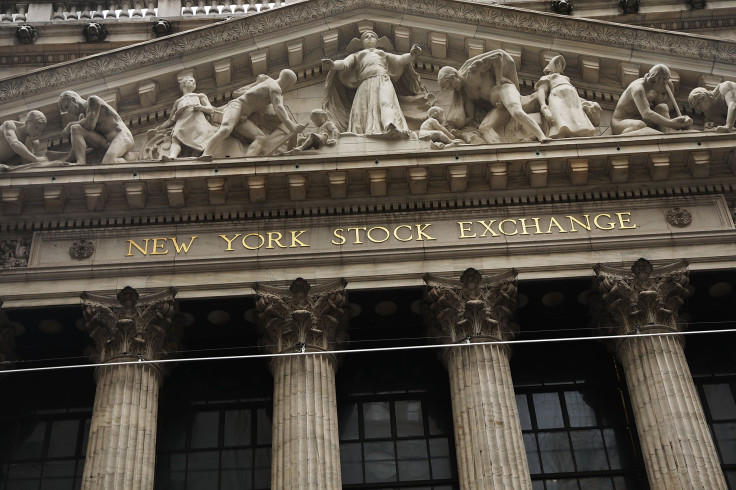Monday's Stock Market Close: US Equities Tumble As Senate Fails To Pass Coronavirus Relief Bill

KEY POINTS
- The number of global confirmed coronavirus cases has now exceeds 350,000
- Goldman Sachs expects a 24% shrinkage in U.S. GDP for the second quarter
- Federal Bank of St. Louis President James Bullard said the unemployment rate may hit 30%.
U.S. stocks dropped on Monday as U.S. Senators failed to pass a huge fiscal stimulus designed to stem the economic damage from the coronavirus.
The Dow Jones Industrial Average dropped 582.05 points to 18,591.93, while the S&P 500 fell 67.52 points to 2,237.40 and the Nasdaq Composite Index dropped 18.84 points to 6,860.67.
Volume on the New York Stock Exchange totaled 6.36 billion shares with 671 issues advancing, one setting a new high, and 2,363 declining, with 802 setting new lows.
Active movers were led by Bank of America (BAC), Ford Motor (F) and Advanced Micro Devices Inc. (AMD).
The U.S. Senate again failed to authorize a massive $1.8 trillion fiscal spending bill over procedural matters.
But earlier on Monday, Treasury Secretary Steven Mnuchin told that Congress was “very close” to getting a fiscal package accomplished.
“We’re using some of the funds we have, but we need Congress to approve additional funds today so that we can move forward and support American workers and the American economy,” Mnuchin said.
Traders also did not seem impressed with the Federal Reserve’s latest foray.
The Fed said on Monday it will introduce a flurry of new programs, including a commitment to continue its asset purchasing program “in the amounts needed to support smooth market functioning and effective transmission of monetary policy to broader financial conditions and the economy.”
“While the Fed’s actions are an enormous help, the only way the markets are going to find sustainable improvement is when the economy is allowed to come back to life, or at least there is a real path in place for how that is going to happen,” said Paul Hickey of Bespoke Investment Group.
“Fed policy is shifting into a higher gear to try to help support the economy which looks like it is in freefall at the moment,” wrote Chris Rupkey, chief financial economist at MUFG Union Bank. “The central bank is shifting from being not just the lender of last resort, but now it is the buyer of last resort. Don’t ask how much they will buy, this is truly [quantitative easing] infinity.”
David Kostin, chief U.S. equity strategist at Goldman Sachs, warned: “If short-term shutdowns lead to business defaults, closures, and permanent layoffs, the damage to corporate earnings growth could persist well after the virus is contained.”
The number of global confirmed coronavirus cases has now exceeded 350,000, with more than 15,000 deaths. The number of cases in the U.S. has reached at least 27,000.
The economic impact from the virus will be huge.
Economists at Goldman Sachs said they expect a 24% shrinkage in U.S. gross domestic product for the second quarter after a 6% decline in the first quarter. But Morgan Stanley economist Ellen Zentner warned on Sunday she expects a massive 30% contraction in the second quarter.
Federal Bank of St. Louis President James Bullard said the unemployment rate may hit 30%.
“Suffice to say that the economy entered a unique, sudden-stop recession in March,” wrote Prajakta Bhide, strategist at MRB Partners. “If there is no concrete evidence of meaningful progress toward controlling the epidemic in the next eight weeks, there will be no basis for people and businesses to feel safe to begin to normalize economic activity.”
Overnight in Asia, markets were mixed. China’s Shanghai Composite fell 3.11%, while Hong Kong’s Hang Seng dropped 4.86%, and Japan’s Nikkei-225 jumped 2.02%.
In Europe markets finished lower as Britain’s FTSE-100 fell 3.79%, France’s CAC-40 dropped 3.32% and Germany’s DAX tumbled 2.1%.
Crude oil futures gained 3.27% at $23.37 per barrel, Brent crude rose 0.89% at $27.27. Gold futures jumped 5.23%.
The euro rose 0.37% at $1.0736 while the pound sterling slipped 1.2% at $1.1499.
The yield on the 10-year Treasury dropped 18.55% to 0.764% while yield on the 30-year Treasury slumped 13.62% to 1.344%.
© Copyright IBTimes 2025. All rights reserved.





















